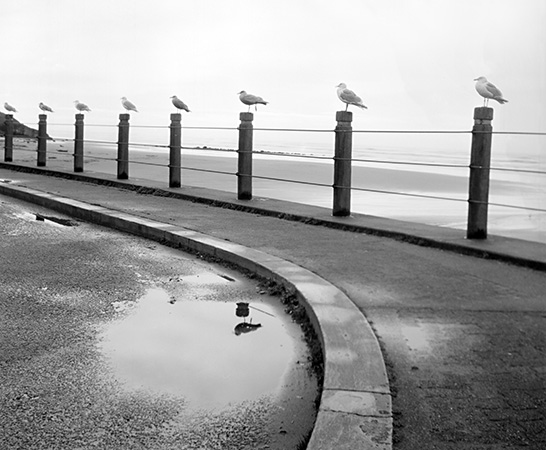1. Handmade Silver Gelatin Emulsions—A Brief History |


In 1839, the world was rocked by an invention as seminal as the printing press. That year, both Louis Daguerre and Henry Fox Talbot announced their individual photographic processes. The fact that they were radically different approaches to photography probably reinforced the impact. From the beginning, everyone understood there is more than one way to make a photograph. The daguerreotype was the initial success, but the paradigm of Talbot's reproducible process won the long game. It is because of photography, both professional and amateur, that "felt history" is divided by photography. Our sense of the realty of the American Civil War is different from that of the Revolutionary War; Abraham Lincoln seems more real than George Washington, even though less a hundred years separated the men and the wars. It only took forty more years for silver gelatin to hit the scene. From the very beginning, the technology yielded excellent reproductions. Just as important as quality to its enduring success was that the materials could be commercially mass produced. This in turn made it available to anyone who wanted to make photographs. Over the next one hundred years, incremental improvements in emulsion making gave us the technology that, until recently, defined "photography." Today, of course, photography implies digital capture and printing, but savvy photographers know there is more to the story. We can create our art from anywhere on the historical timeline. The Light Farm explores the possibilities of handmade silver gelatin emulsions. Silver gelatin emulsions are the heart of both film (negatives) and black and white printing papers. The first silver gelatin negatives were emulsion on glass. This technology was called "dry plate" to distinguish it from "wet plate," the previous widely-practiced photographic technology. Wet plates were (and still are) collodion-based, rather than gelatin. The plates must be made fresh immediately before exposure. This means that the wet plate photographer has to take everything needed to make and develop a plate everywhere he or she goes, including to the top of a mountain. This limiting constraint still pertains to contemporary wet plate photographers (although an RV is a whole lot more comfortable and convenient than a pack mule and tent!). Dry plates opened up the photographic community to more practitioners and more locations and subjects. It was still a lot of work. The glass plates under the emulsion were still heavy and still necessarily required view cameras to use, but (and this was huge) you could bring them ready-made into the field, expose the plates, and then wait until you got back to a studio to develop them. Photographic invention is as much about improving convenience for photographers as anything else. To take advantage of the newly invented roll film box cameras, flexible negatives soon followed dry plates. Photographers could expose a long roll of negatives and send the camera back to Kodak to be developed. The photographer got back a stack of prints and a freshly loaded camera. The first roll films were coated on paper. Acetate base material soon followed. Along the way, polyester base became available as well. At the same time negative technology was changing, printing papers improved and expanded in scope. The first papers were simply the same emulsions as those coated on glass—a mixture of bromide, iodide, silver nitrate, and gelatin. Chloride papers followed almost immediately, both printing-out (POP) and developing-out. Various types and brands of bromide and chloride papers soon flooded the market. There was a rich diversity of options for several decades. The scope and variety of silver gelatin materials took a nosedive when digital photography went mainstream. Beloved materials disappeared. Photographers were often caught unprepared to complete bodies of work in progress. Dependent on commercial products, they got caught up in market forces. Fortunately (more truthfully: joyfully), we need not be dependent on factory materials. In addition to the already well-known alternative processes, we can make an astonishing number of materials from the first five decades of silver gelatin history in a home darkroom—with rudimentary equipment, and without a degree in chemistry or photo-engineering. |

|
| < Preface The Possibilites > |